What a blast: The rush of amateur astronauts
Wednesday, 13 October 2021 12:30
As veteran actor William Shatner—Captain Kirk of "Star Trek" fame—becomes the latest celebrity to go into space on Wednesday, we look at the recent rush of amateur astronauts.
Beam me up, Bezos
Shatner went where no 90-year-old has gone before aboard Amazon founder Jeff Bezos' Blue Origin rocket.
The Canadian became the oldest person to go into space on the flight, beating pioneering female pilot Wally Funk, 82, who also flew with Bezos in July.
Shatner experienced a few minutes of weightlessness 60 miles (100 kilometres) from Earth, before returning in the reuseable rocket.
Bezos and his brother Mark were also on Blue Origin's maiden mission in July.
Russian first
Last week, Russian actress Yulia Peresild blasted off to the International Space Station with a film director to try to pip the United States in making the first feature film in orbit.
They want to best "Mission Impossible" star Tom Cruise who announced his own movie project with NASA and Elon Musk's SpaceX last year.
They hope to wrap their story about a female surgeon who is dispatched to save a cosmonaut by the time they touch down on Sunday.
Australia plans lunar rover to help NASA find oxygen on moon
Wednesday, 13 October 2021 12:16
Australia has agreed to build a 20-kilogram (44-pound) semi-autonomous lunar rover for NASA to take to the moon as early as 2026 in search of oxygen.
Video: Impression of Webb's journey to space
Wednesday, 13 October 2021 12:00
The James Webb Space Telescope will be the largest, most powerful telescope ever launched into space.
Webb's flight into orbit will take place on an Ariane 5 rocket from Europe's Spaceport in French Guiana.
Webb is the next great space science observatory, designed to answer outstanding questions about the Universe and to make breakthrough discoveries in all fields of astronomy. Webb will see farther into our origins—from the formation of stars and planets, to the birth of the first galaxies in the early Universe.
During the first month in space, on its way to the second Langrange point (L2), Webb will undergo a complex unfolding sequence. Key steps in this sequence are unfolding Webb's sunshield—a five-layer, diamond-shaped structure the size of a tennis court—and the iconic 6.5-meter wide mirror, consisting of a honeycomb-like pattern of 18 hexagonal, gold-coated mirror segments.
Working with partners, ESA was responsible for the development and qualification of Ariane 5 adaptations for the Webb mission and for the procurement of the launch service. As well as launch services, ESA contributes to two of the four science instruments (NIRSpec and MIRI), and provides personnel to support mission operations.
At your Service Module
Wednesday, 13 October 2021 11:52 Image:
Image:
The second European Service Module is prepared for shipment to NASA’s Kennedy Space Center in Florida, USA this week at Airbus facilities in Bremen, Germany. Made up of components from ten European countries, ESM-2 will power the first crewed flight to the Moon on the Artemis II mission.
The European Service Modules are a key element of the Orion spacecraft, the first to return humans to the Moon since the 1970s.
Built by the brightest minds in Europe, the module provides propulsion, power and thermal control and will supply astronauts with water and oxygen. The ESM is installed underneath the
Image: Tethered satellites for propulsion without fuel
Wednesday, 13 October 2021 11:51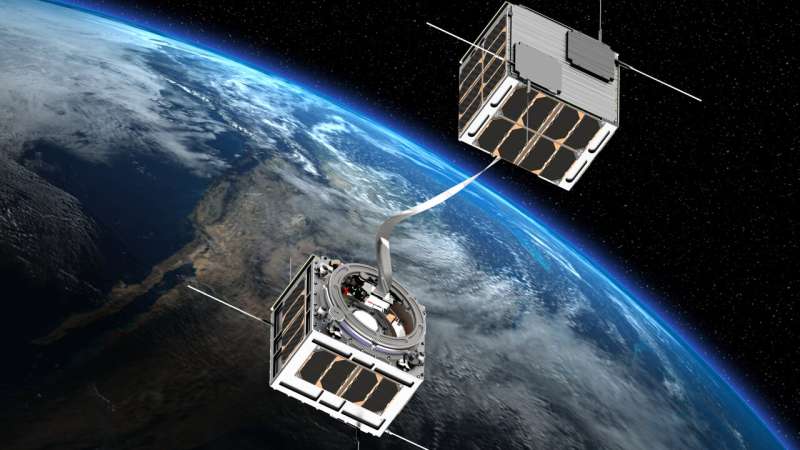
How to propel a spacecraft without propellant? Use electrodynamic tethers. These are long, strong conductors connecting two spacecraft. When direct current is applied to the tether, the tether exerts a force on the spacecraft, causing it to either accelerate or brake.
Such tethers might be used to perform fuel-free orbital maneuvers, or deorbit satellites at the end of their working lifetime to prevent buildup of orbital debris.
Universidad Carlos III de Madrid in Spain has proposed an improved tether design incorporating thin film solar cells to harvest added power for the tether plasma circuit, intended for end-of-life deorbiting.
The idea was proposed through ESA's Open Space Innovation Platform (OSIP) Open Discovery ideas Channel, seeking novel ideas for new space research activities. This innovative concept has been accepted by ESA for implementation, along with numerous others.
Explore further
Ariane 6 mast gains cryogenic arms
Wednesday, 13 October 2021 10:30 Image:
Cryogenic arms on the upper part of the Ariane 6 mast on the launch pad connect to the rocket's upper stage and retract at liftoff
Image:
Cryogenic arms on the upper part of the Ariane 6 mast on the launch pad connect to the rocket's upper stage and retract at liftoff Deep Blue Aerospace conducts 100-meter VTVL rocket test
Wednesday, 13 October 2021 10:13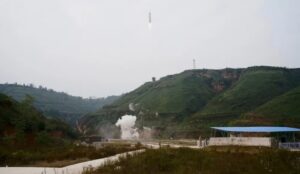
Chinese private launch Deep Blue Aerospace completed a 100-meter level launch and landing test with its Nebula M1 VTVL test stage Wednesday.
Webb arrives in French Guiana for launch on Ariane 5
Wednesday, 13 October 2021 09:48 Video:
00:01:54
The James Webb Space Telescope arrived in French Guiana on 12 October 2021 ahead its launch on Ariane 5
Video:
00:01:54
The James Webb Space Telescope arrived in French Guiana on 12 October 2021 ahead its launch on Ariane 5 Australia to provide rover for future NASA lunar lander mission
Wednesday, 13 October 2021 08:55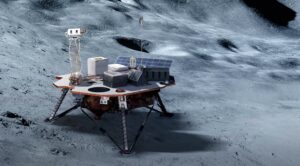
NASA and its Australian counterpart have agreed to cooperate on a future robotic lander mission where Australia will provide a small rover as part of a test of resource utilization technologies.
Europe delivers module for first astronaut mission to the Moon
Wednesday, 13 October 2021 08:22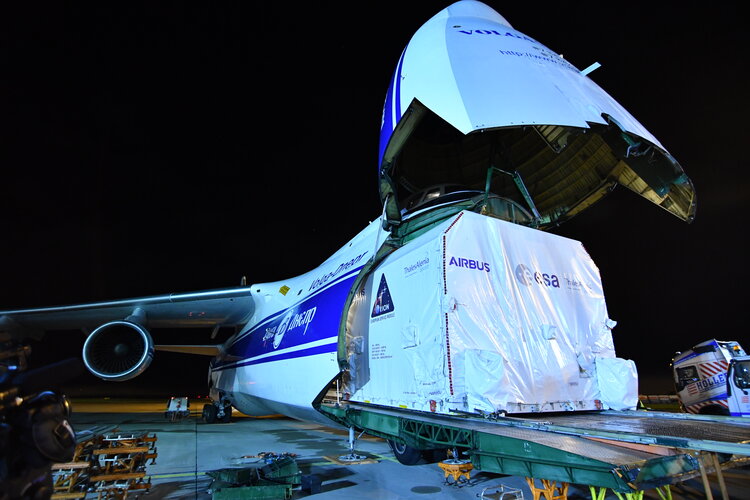
The second European Service Module for NASA’s Orion spacecraft is on its way to USA. It is the last stopover on Earth before this made-in-Europe powerhouse takes the first astronauts around the Moon on the Artemis II mission.
Cool tech to almost double deep space data
Wednesday, 13 October 2021 07:39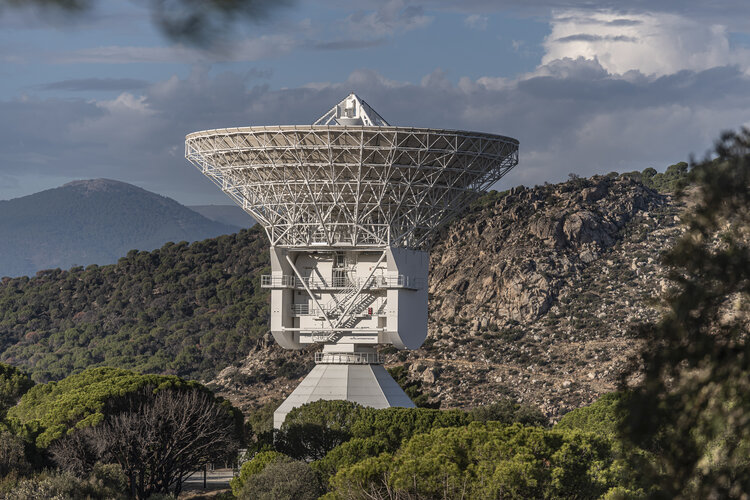
An upgrade to ESA’s three 35-metre deep-space antennas will boost science data return by 40% by cooling the ‘antenna feed’ to just 10 degrees above the lowest temperature possible in the Universe.
Webb brochure, interactive or PDF, available in six languages
Wednesday, 13 October 2021 07:30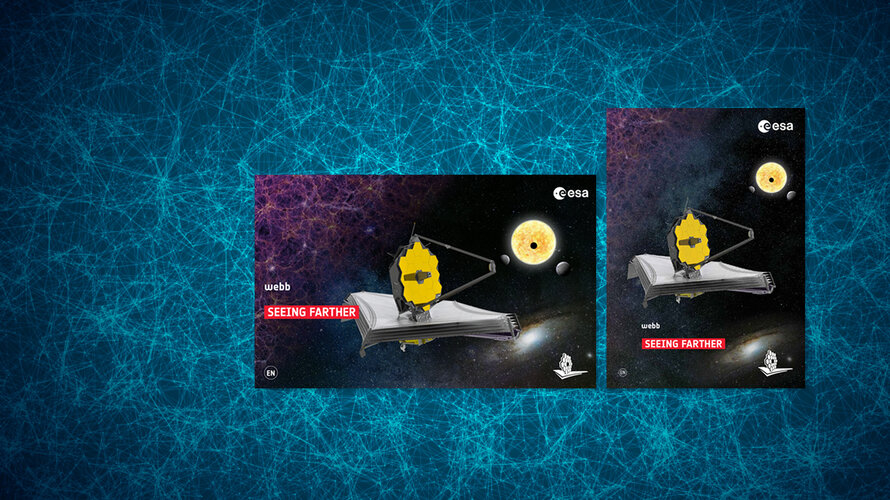
Webb brochure
Interactive or PDF, available in six languages
Putting the Earth observation into ‘the market perspective’
Wednesday, 13 October 2021 07:20
With a boom in the global market for Earth observation information and data products, participants at this year’s Φ-week conference have been digging deep into the ‘market perspective’. This important topic includes how to gain a better understanding of what governments, industry, the public and other users of Earth observation products and services need and expect to create value for society and the economy.
Putting Earth observation into ‘the market perspective’
Wednesday, 13 October 2021 07:20
With a boom in the global market for Earth observation information and data products, participants at this year’s Φ-week conference have been digging deep into the ‘market perspective’. This important topic includes how to gain a better understanding of what governments, industry, the public and other users of Earth observation products and services need and expect to create value for society and the economy.
To oldly go: Shatner, 90, inspires with real-life space trip
Wednesday, 13 October 2021 06:53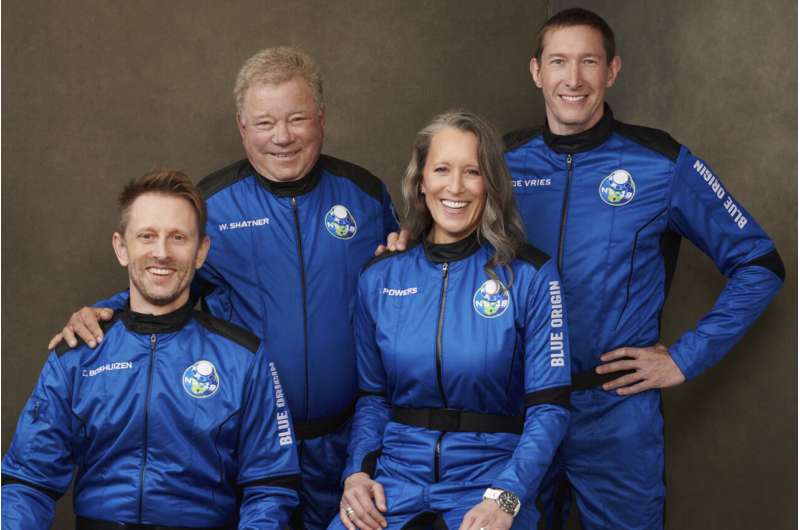
As William Shatner prepares to be beamed up Wednesday for his first real-life spaceflight, and to become at 90 the oldest person ever to enter the final frontier, he's bringing out the awe in the small handful of people around a rural Texas spaceport.
